Today, we’re dusting off the old GeForce RTX 2070 to see how it holds up today against the newer RTX 4070. Of course, the RTX 4070 is going to be faster; the question is how much faster, and is it a viable upgrade for those who have been holding out for the past 5 years? To find out, we have a 40-game benchmark covering the 1080p, 1440p, and 4K resolutions.
The GeForce RTX 2070 is now a 5-year-old product as we just noted, released back in October 2018 at an MSRP of $500 – or $600 if you were willing to get rolled on the Founders Edition model. So let’s say $500, and that means 5 years later, you now have the opportunity to purchase the RTX 4070 for $100 more at $600, but is it finally time to upgrade?
There’s not much point in digging into the specs, as each GPU is based on an entirely different architecture using very different manufacturing processes. So, apart from the obvious architectural differences, the RTX 2070 came with 8GB of 14 Gbps GDDR6 memory, whereas the RTX 4070 has been upgraded with 12GB of 21 Gbps GDDR6X memory.
Certainly not a massive upgrade after 5 years; we would have expected back in 2018 that by 2023, the $600 price point from Nvidia would offer at least 16GB of VRAM, if not more, but sadly that’s not the case.
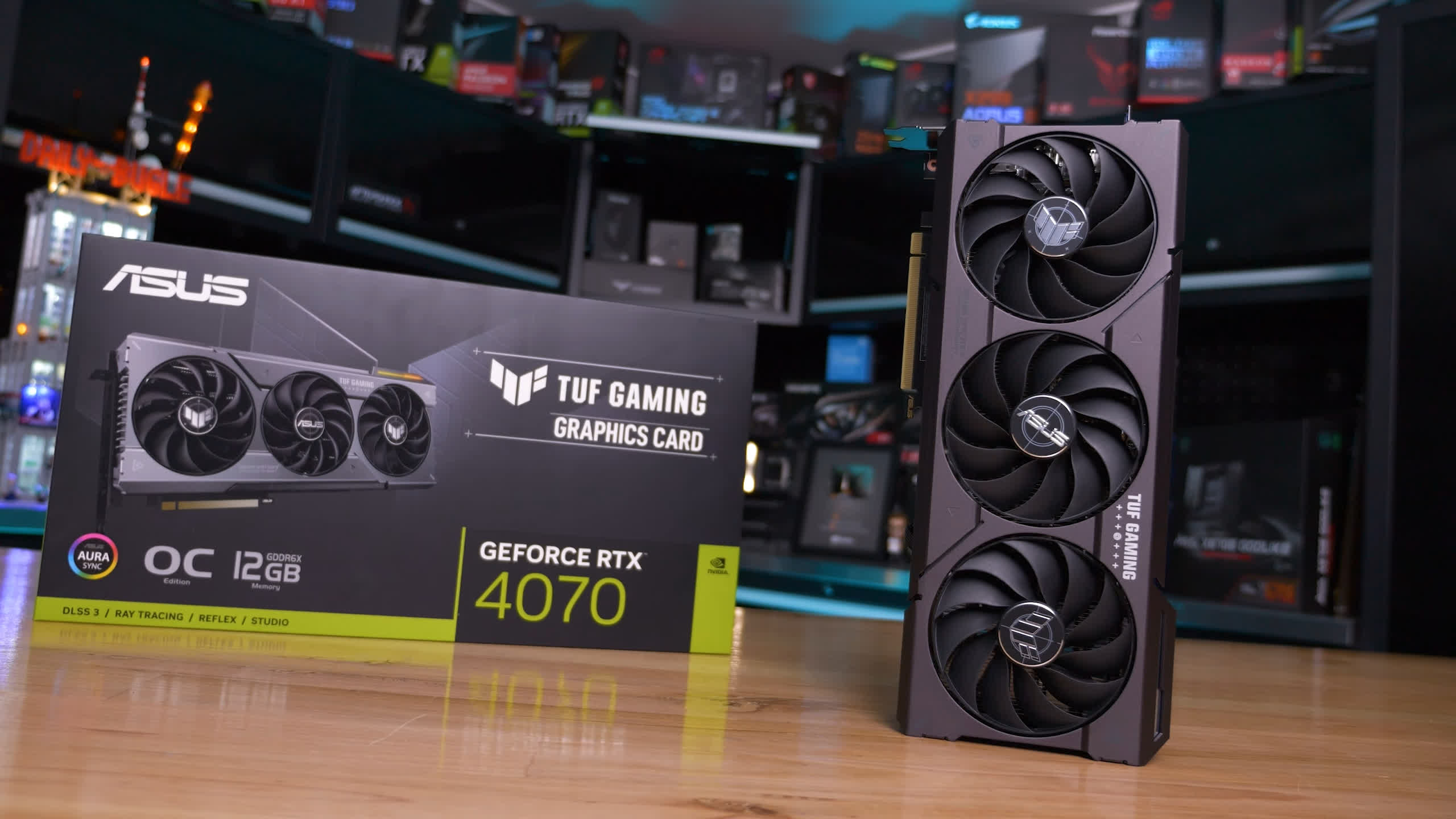
Still, the GeForce RTX 4070 does offer several significant upgrades over the RTX 2070, such as AV1 encoding, improved efficiency, better ray tracing support, DLSS 3 frame generation, and of course, better performance in general. That’s what we’re about to examine.
For testing, the CPU powering our system is the Ryzen 7 7800X3D, which has been paired with the Gigabyte X670E Aorus Master using 32GB of DDR5-6000 CL30 memory. As usual, we’ll go over the data for around a dozen titles before jumping into the big breakdown graphs. So let’s get into it…
Benchmarks
Starting with Cyberpunk 2077, using the high-quality preset with ray tracing effects disabled, we find that the RTX 4070 is 84% faster than the 2070 at 1080p, 88% faster at 1440p, and 76% faster at 4K. However, even the 4070 isn’t really viable here, at least not without the help of upscaling.
The results at 1440p show a night and day difference, and at 1080p, you can enjoy high refresh rate performance with the 4070.

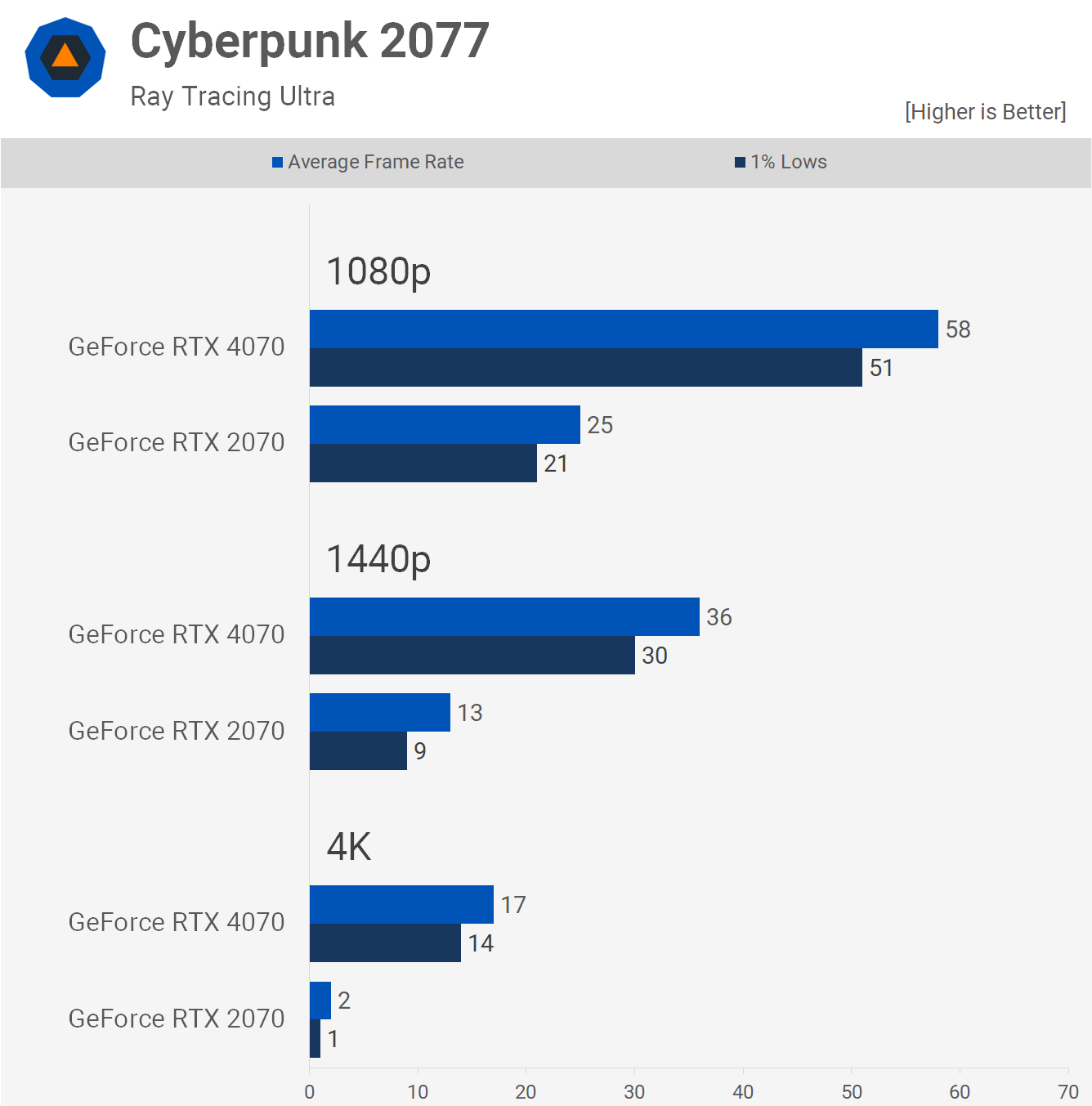
Where the GeForce 20 series was a major letdown, in our opinion, was the ray tracing performance. Even at 1080p, with any meaningful degree of ray tracing enabled, performance completely tanks to unplayable levels.
Even with the aid of DLSS, performance remains underwhelming. The RTX 4070, on the other hand, delivered 132% more performance at 1080p and, even without DLSS, was able to provide playable performance. Granted, 58 fps on average isn’t amazing, but at least now, two generations later, ray tracing is viable.
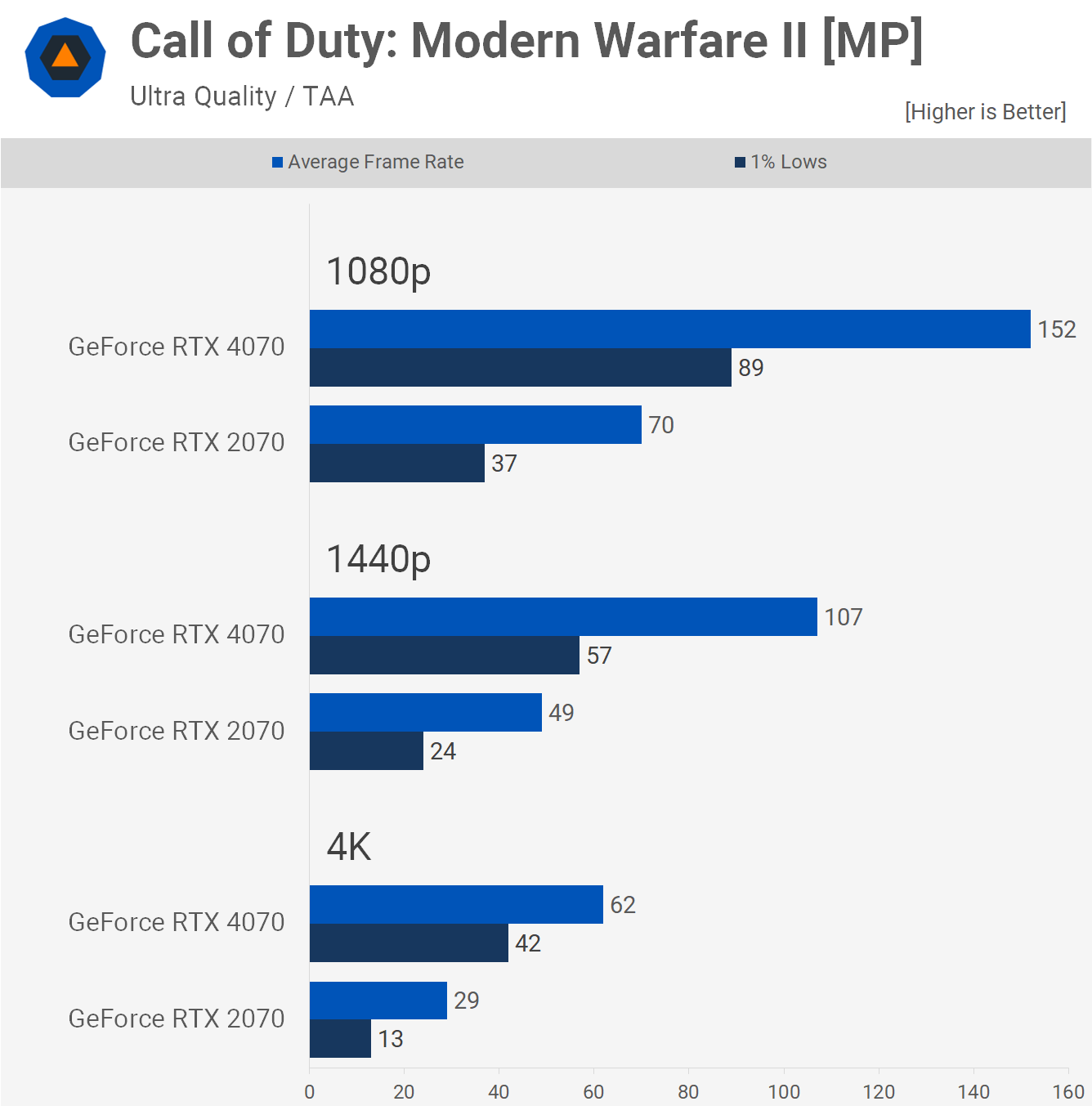
Those playing Call of Duty Modern Warfare II will enjoy massive performance gains when upgrading from the 2070 to the 4070, as we saw a 117% uplift at 1080p, 118% at 1440p, and 114% at 4K. These are obviously incredible performance gains and make the 4070 well worth the upgrade for those who have been holding out.
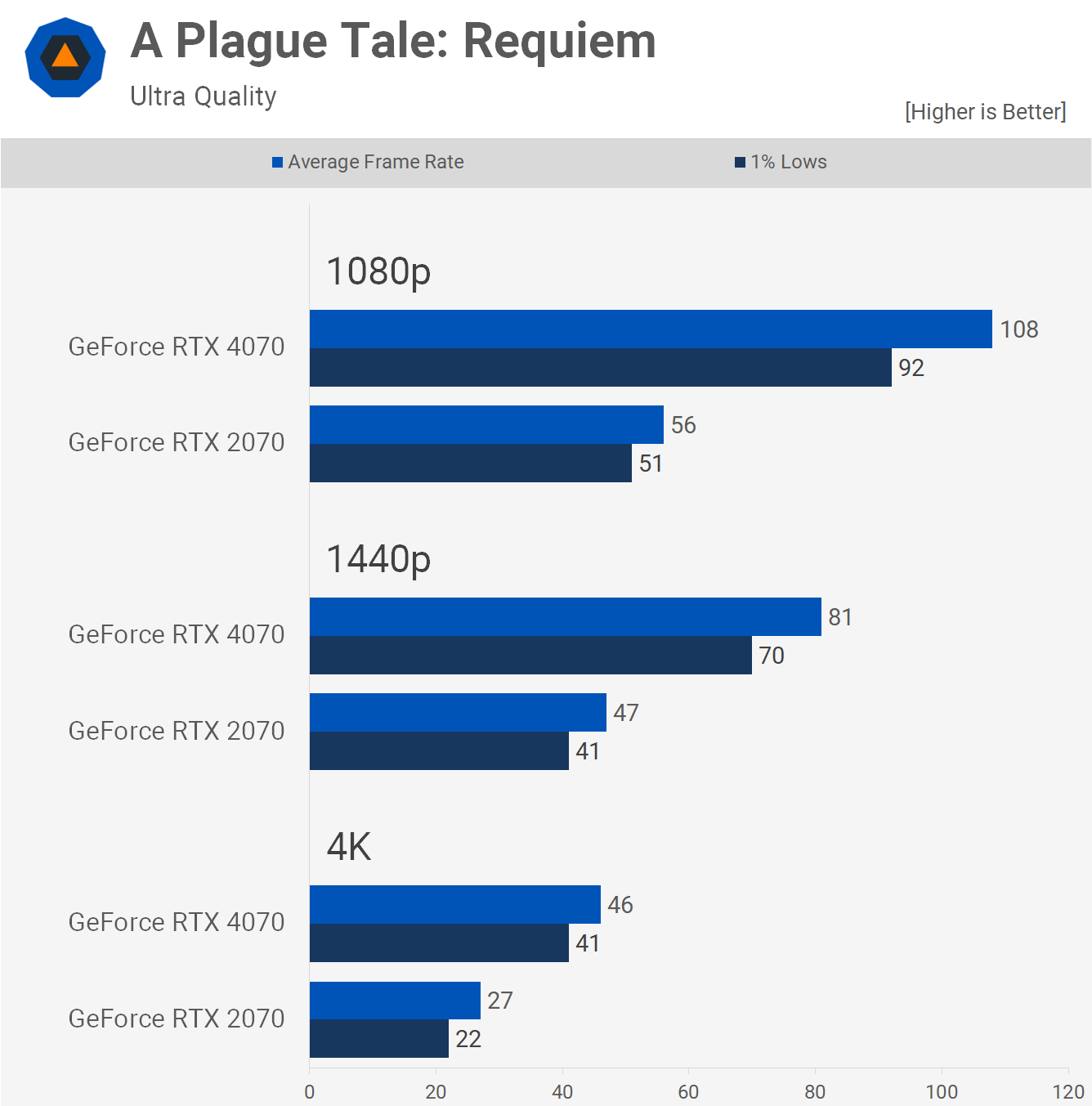
A Plague Tale: Requiem is an impressive-looking game that you can fully appreciate using the RTX 4070 without the need for upscaling at resolutions up to 1440p, while 4K is possible at 60 fps using DLSS. When compared to the 2070, you’re looking at a 93% performance boost at 1080p, 72% at 1440p, and 70% at 4K. So again, huge performance gains are offered by the RTX 4070.
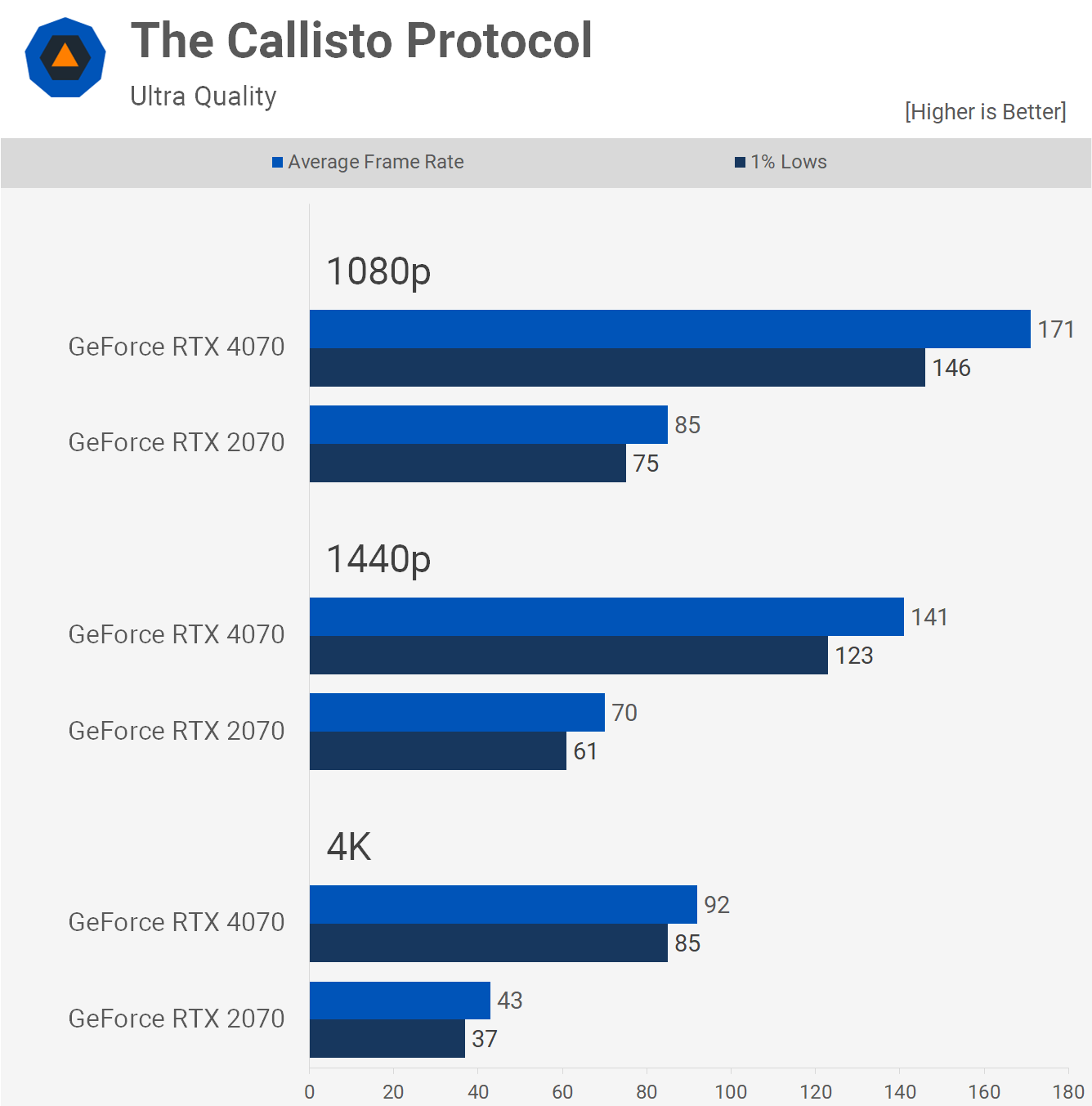
The Callisto Protocol, using the highest quality preset, is a breeze for the RTX 4070, delivering 92 fps at 4K. This means it was 114% faster than the RTX 2070. The 2070 was certainly capable at 1080p and even decent at 1440p, but 4K was just too much for the old mid-range GPU.
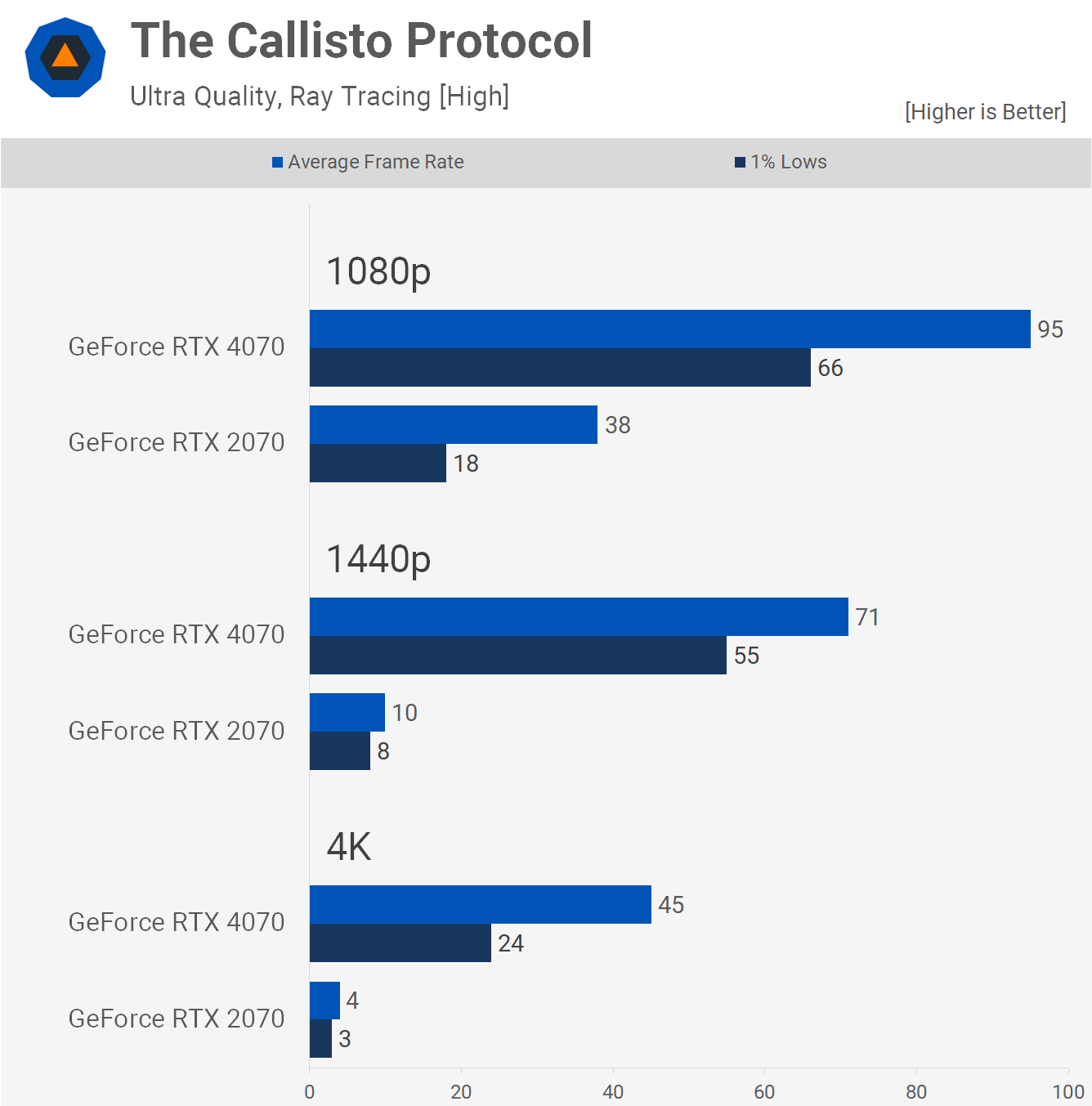
Where the old 8GB graphics card fails, though, is with ray tracing enabled, as the game really calls for over 9GB of memory. Even at 1080p, the 2070 suffered from major frame stutters and was completely unusable at 1440p and above. The 4070, on the other hand, was usable at 1440p and, with upscaling, would probably work at 4K. We’re looking at a 610% improvement at 1440p, as the 2070 is essentially broken, so needless to say, the 4070 is a significant upgrade here.
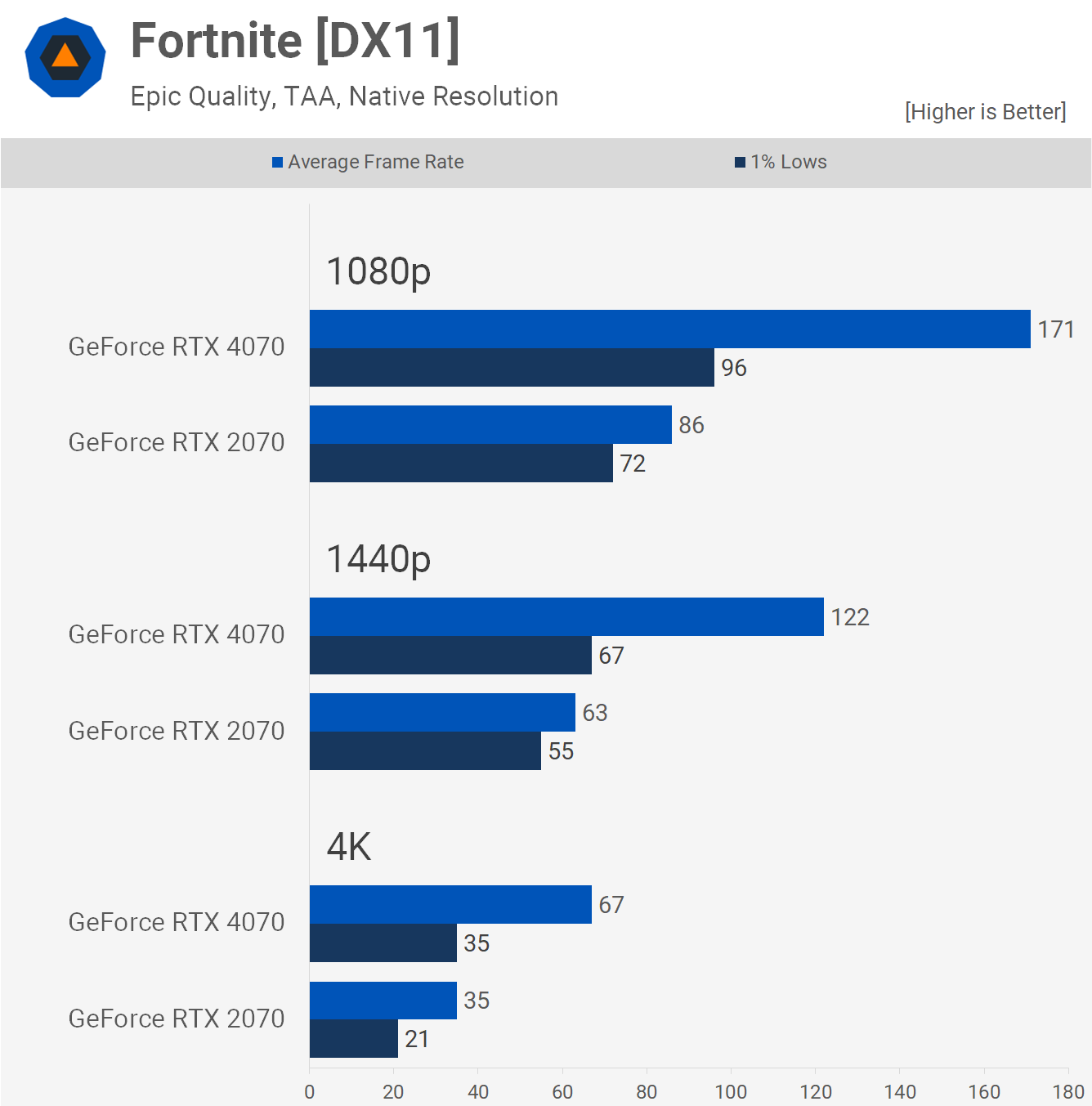
Moving on to Fortnite using the DirectX 11 mode, we see that the RTX 4070 is roughly twice as fast as the 2070 at all three tested resolutions. Using the Epic quality settings, the 2070 is good for just 86 fps at 1080p, whereas the 4070 was able to average 171 fps, showing a 99% increase.
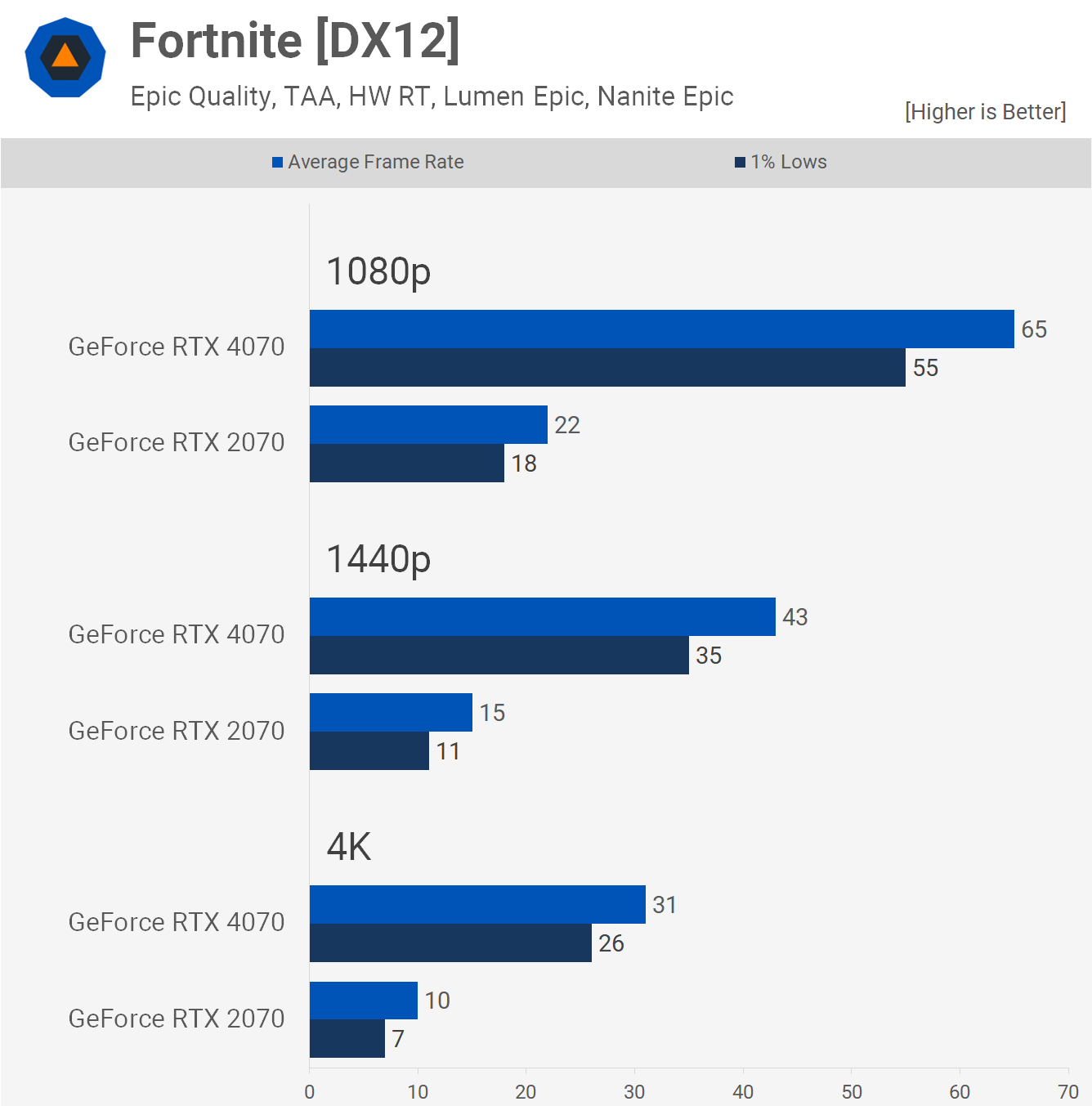
Then once again, with ray tracing enabled, we see that the RTX 2070 falls apart, reduced to just 22 fps at 1080p. The RTX 4070, on the other hand, was almost 200% faster, hitting 65 fps at 1080p. So, for those who want to play Fortnite with all the eye candy turned on, the 4070 can deliver playable performance at 1080p and will be capable at 1440p with upscaling enabled.
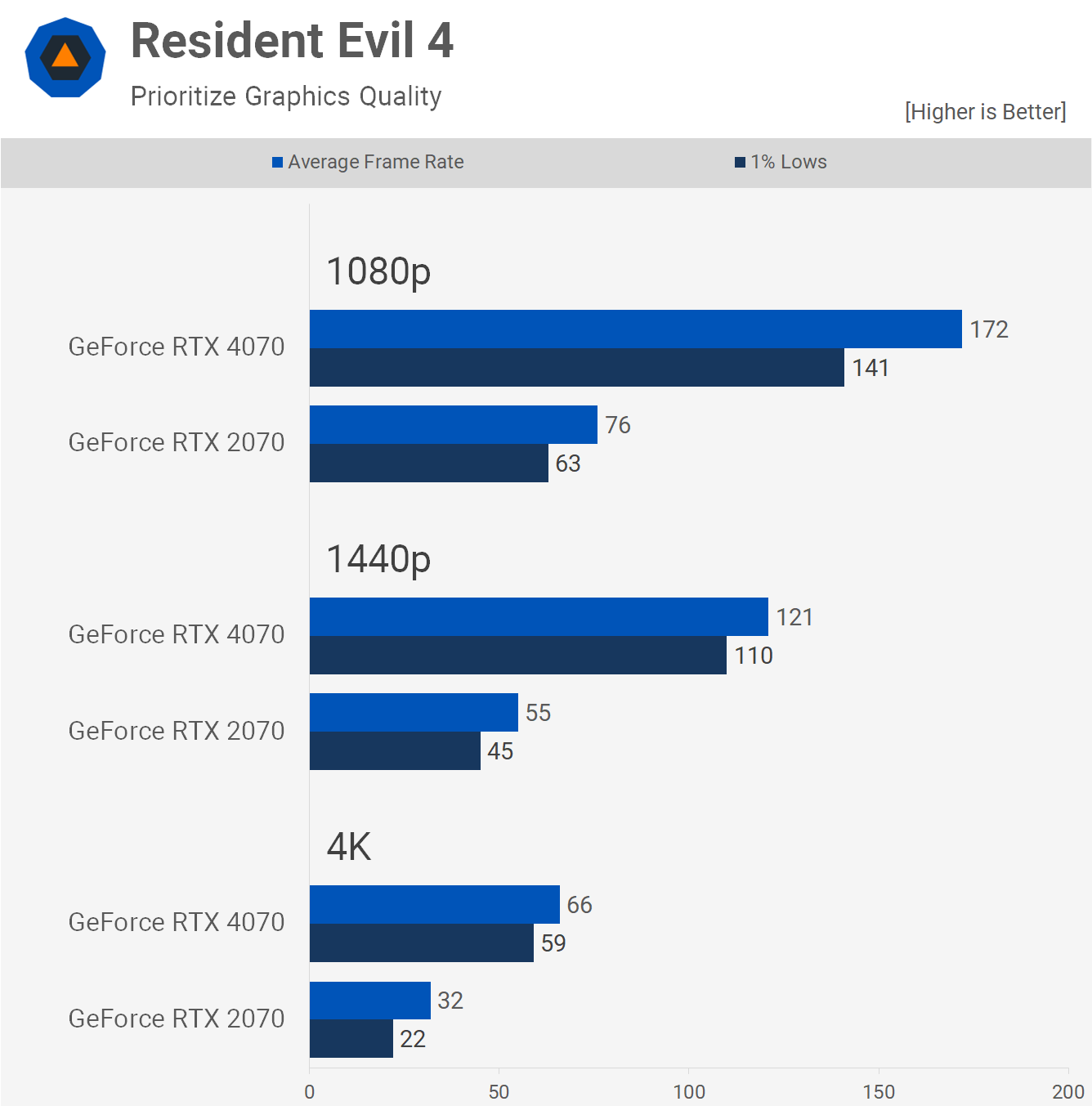
Playing Resident Evil 4 without ray tracing enabled is possible on the RTX 2070 at over 60 fps at 1080p and just shy of 60 fps at 1440p. While certainly capable of playable performance, the RTX 4070 was 126% faster at 1080p, 120% faster at 1440p, and 106% faster at 4K.
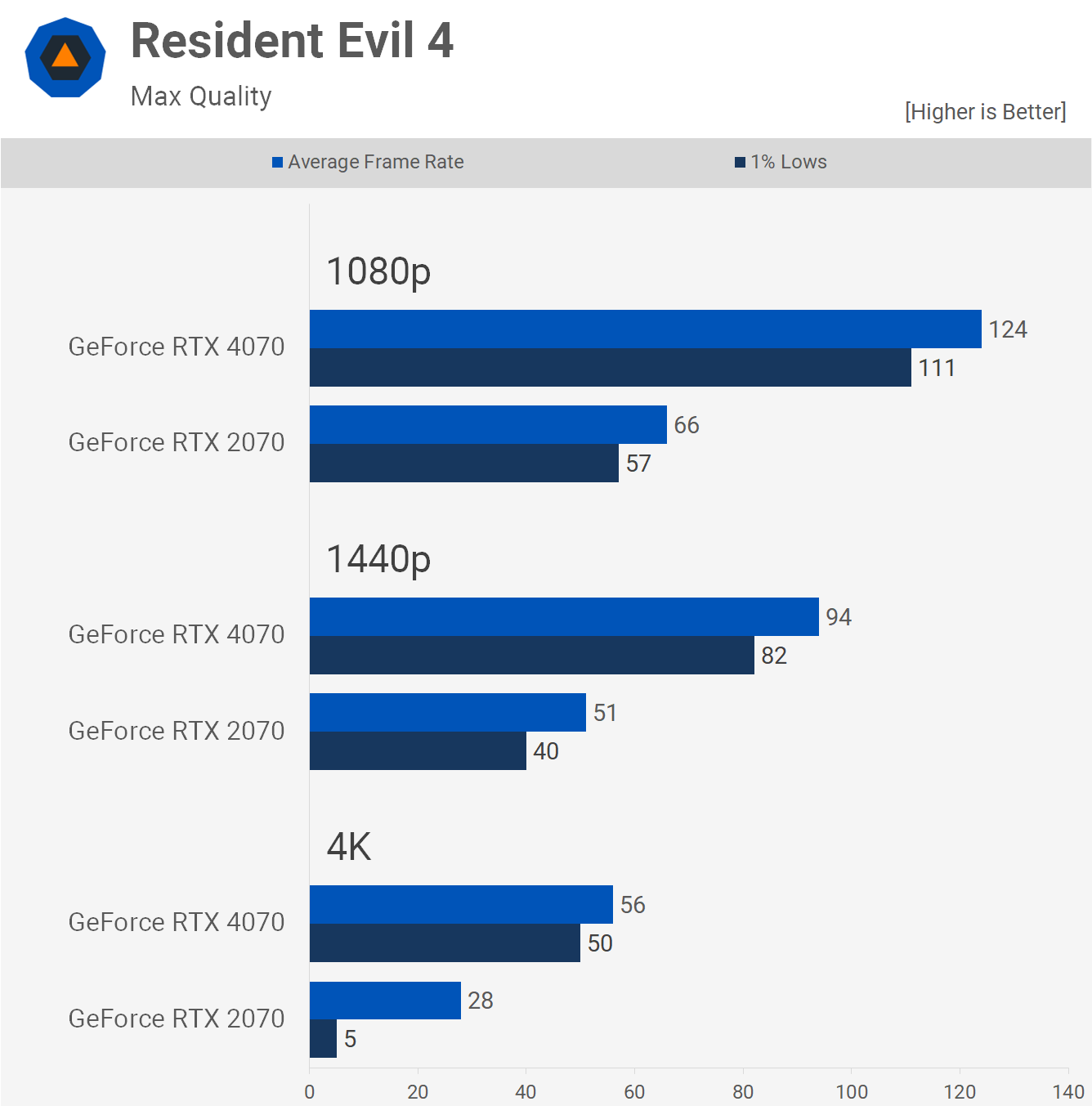
Interestingly, enabling the maximum quality preset doesn’t reduce performance all that much for the RTX 2070 at 1080p and 1440p, though understandably, it does break performance at 4K. Still, although the 2070 did deliver a playable 66 fps at 1080p, the 4070 was 88% faster, hitting 124 fps, resulting in another significant performance upgrade.

Spider-Man Remastered is one of the better-optimized games to be released in the last few years, and it shows with 118 fps using the RTX 2070 at 1080p with the maximum quality preset. We’re even looking at 84 fps at 1440p, and while 48 fps is less than ideal, it’s still an impressive result for the old 2070 at 4K.
The RTX 4070 does offer an 81% boost at 1080p, 89% at 1440p, and 85% at 4K, resulting in some very strong performance gains, particularly noticeable at 1440p and 4K.
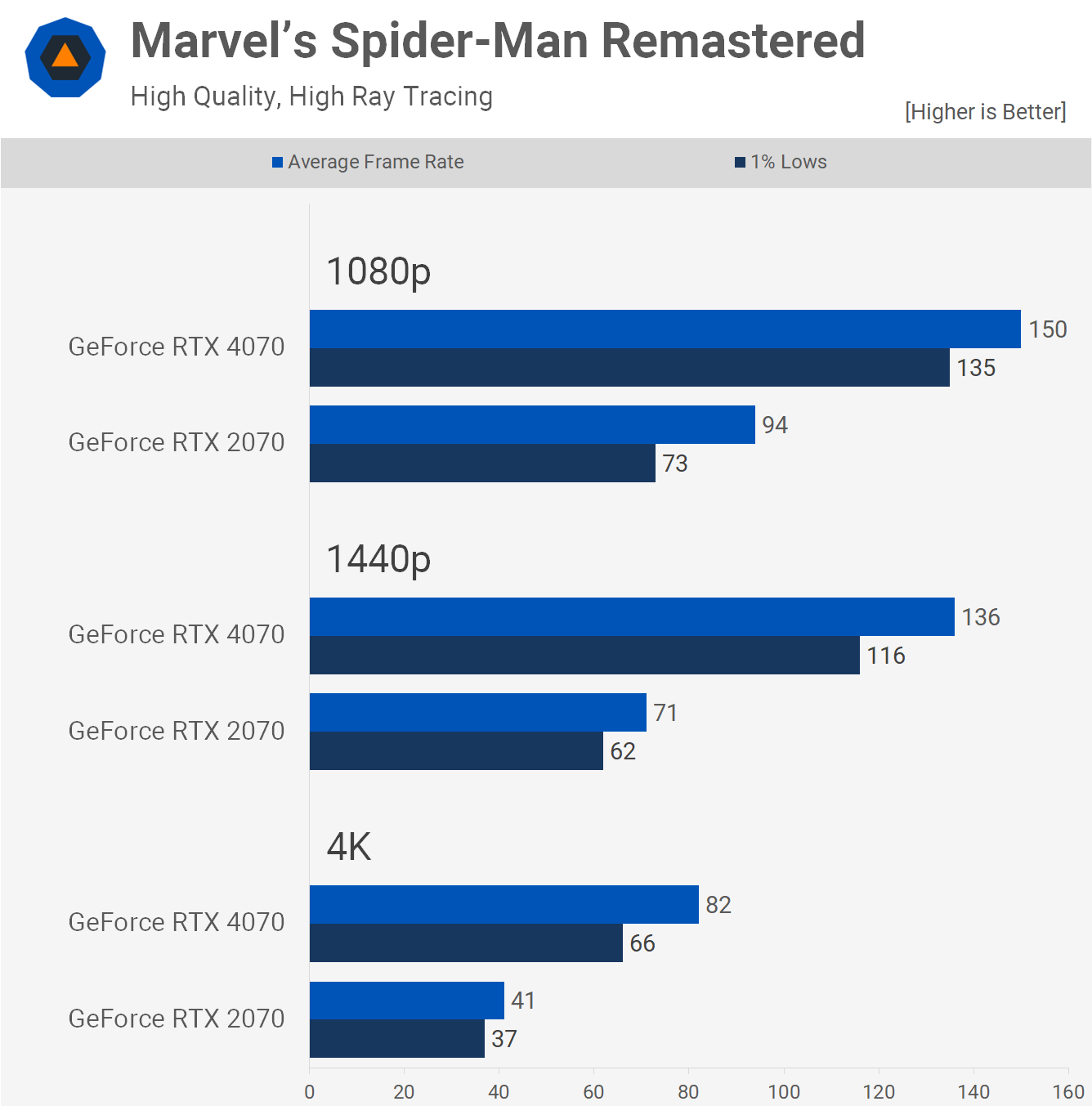
Even with ray tracing enabled, the RTX 2070 was impressive at 1080p and 1440p, delivering highly playable performance. However, if you demand more, the 4070 will deliver with 60% more performance at 1080p and 92% more at 1440p, while 4K gaming also becomes a reality with 82 fps on average.

Now, RTX 2070 owners who play a lot of F1 2022 and aren’t interested in ray tracing probably won’t find themselves in desperate need of an upgrade, given the 5-year-old GPU is still good for 154 fps at 1080p and 116 fps at 1440p. In fact, the 71 fps seen at 4K will probably be acceptable for most, and remember, we are testing using the highest quality preset but with RT disabled. If you are gaming at 4K, though, the RTX 4070 upgrade will double your frame rate.
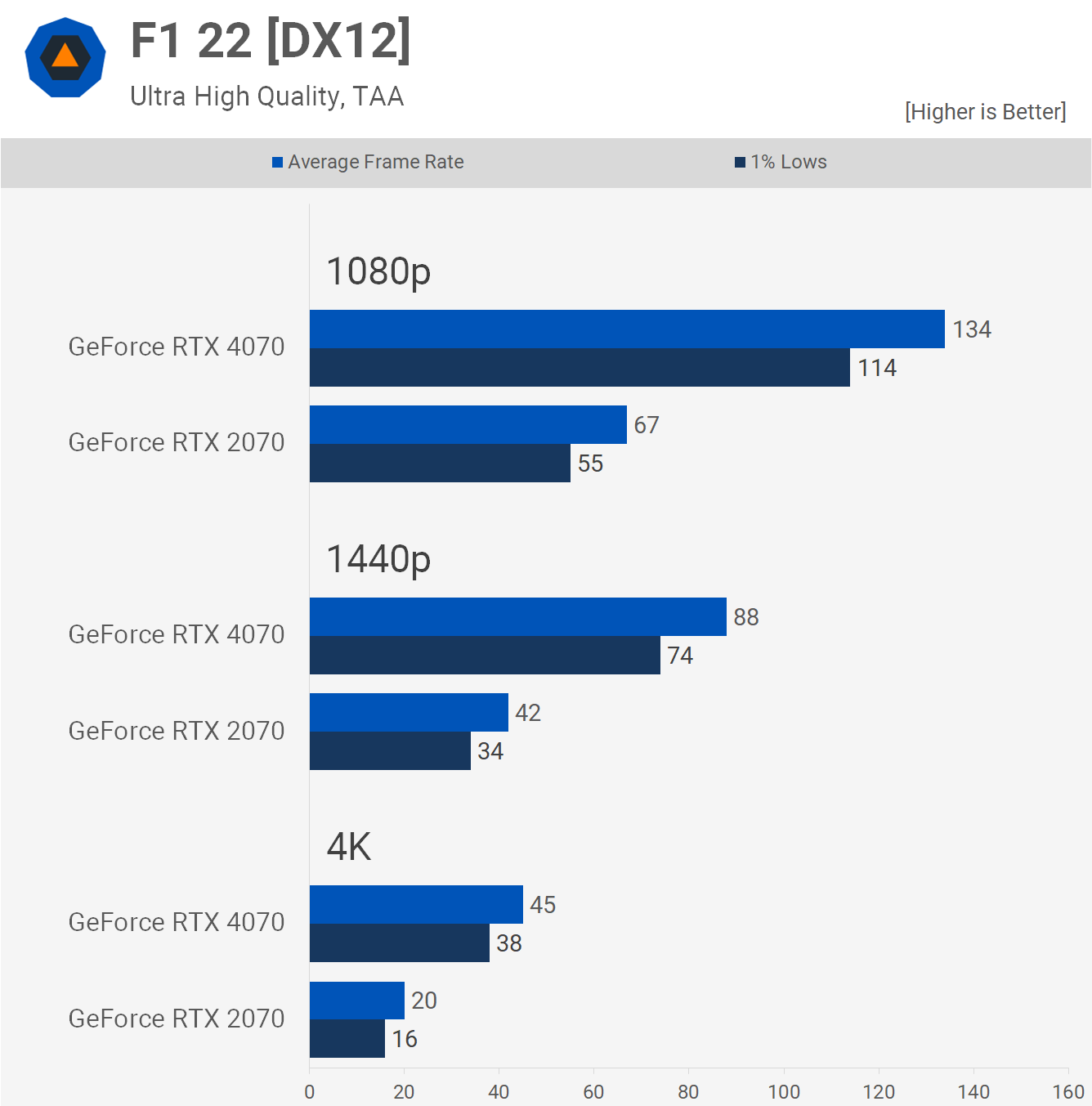
Where the RTX 4070 upgrade starts to become necessary for F1 2022 gamers is when you enable ray tracing, which personally, I don’t think is worth it in this title. However, your opinion might differ, and if it does, you’ll be looking at a 100% or better performance uplift, which is a significant increase, to say the least.
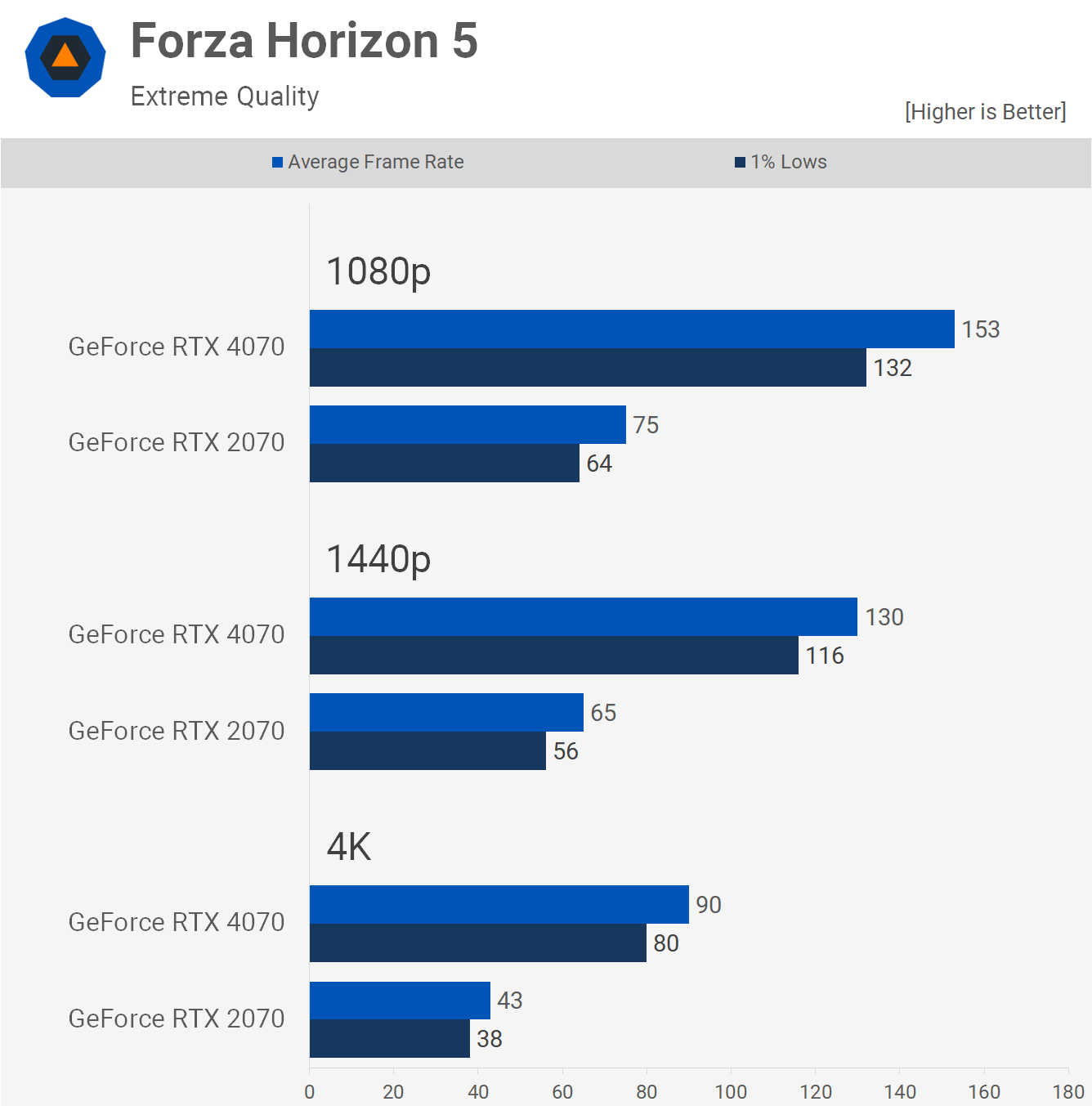
Forza Horizon 5 is a modern game that looks amazing and can still be enjoyed with an RTX 2070, even with the visual settings maxed out at 1440p. But if you’re after a high refresh rate experience with maximum graphical fidelity, then the RTX 4070 will provide that, boosting 1080p performance by 104%, 1440p by 100%, and 4K by 109%.
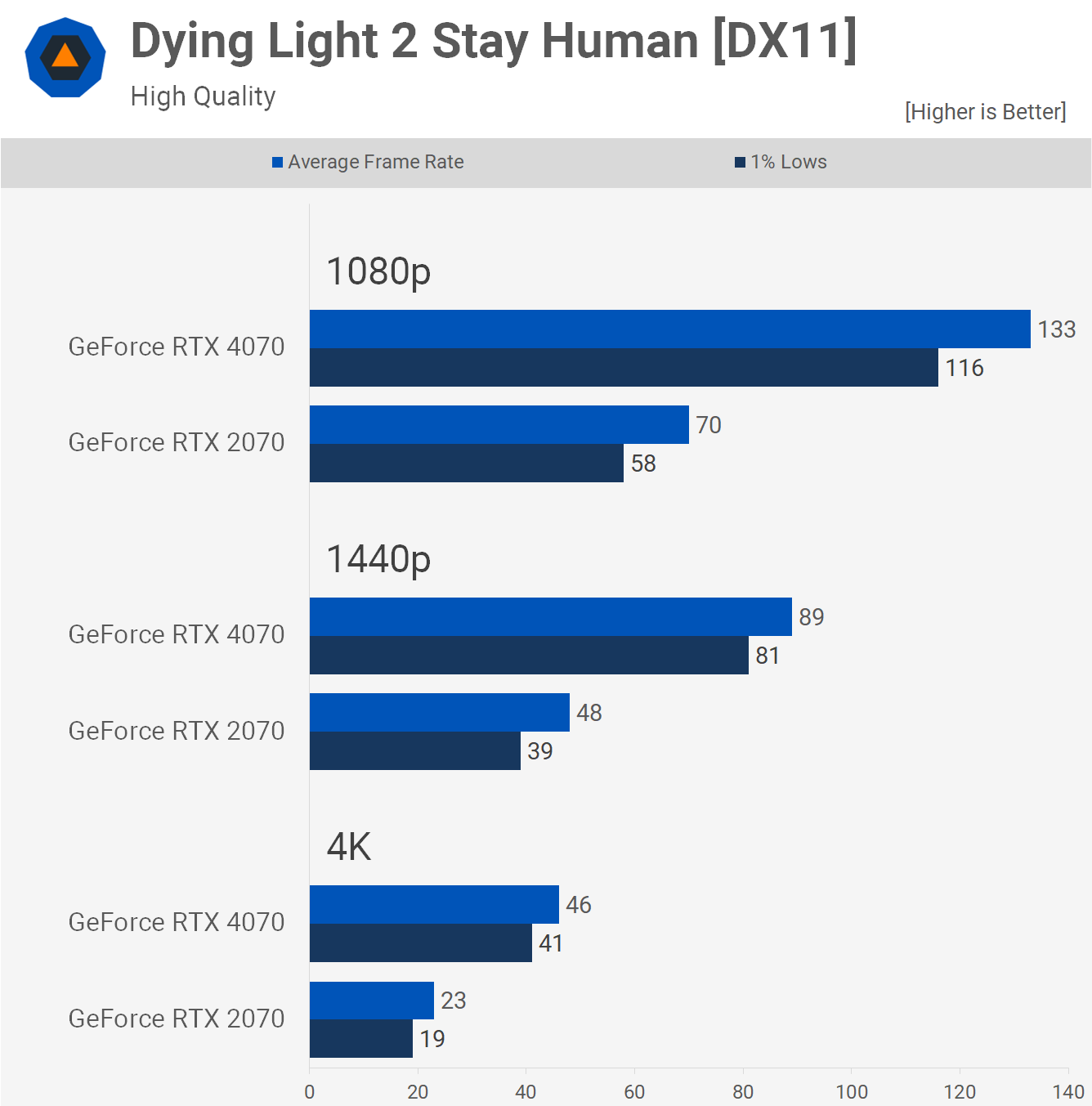
Dying Light 2 plays quite well on the RTX 2070 at 1080p, but for those targeting 1440p, upscaling will be required, and of course, 4K is out of the question. Even at 1080p, the RTX 4070 is still 90% faster and 85% faster at 1440p, so the performance boost offered by the upgrade is massive.
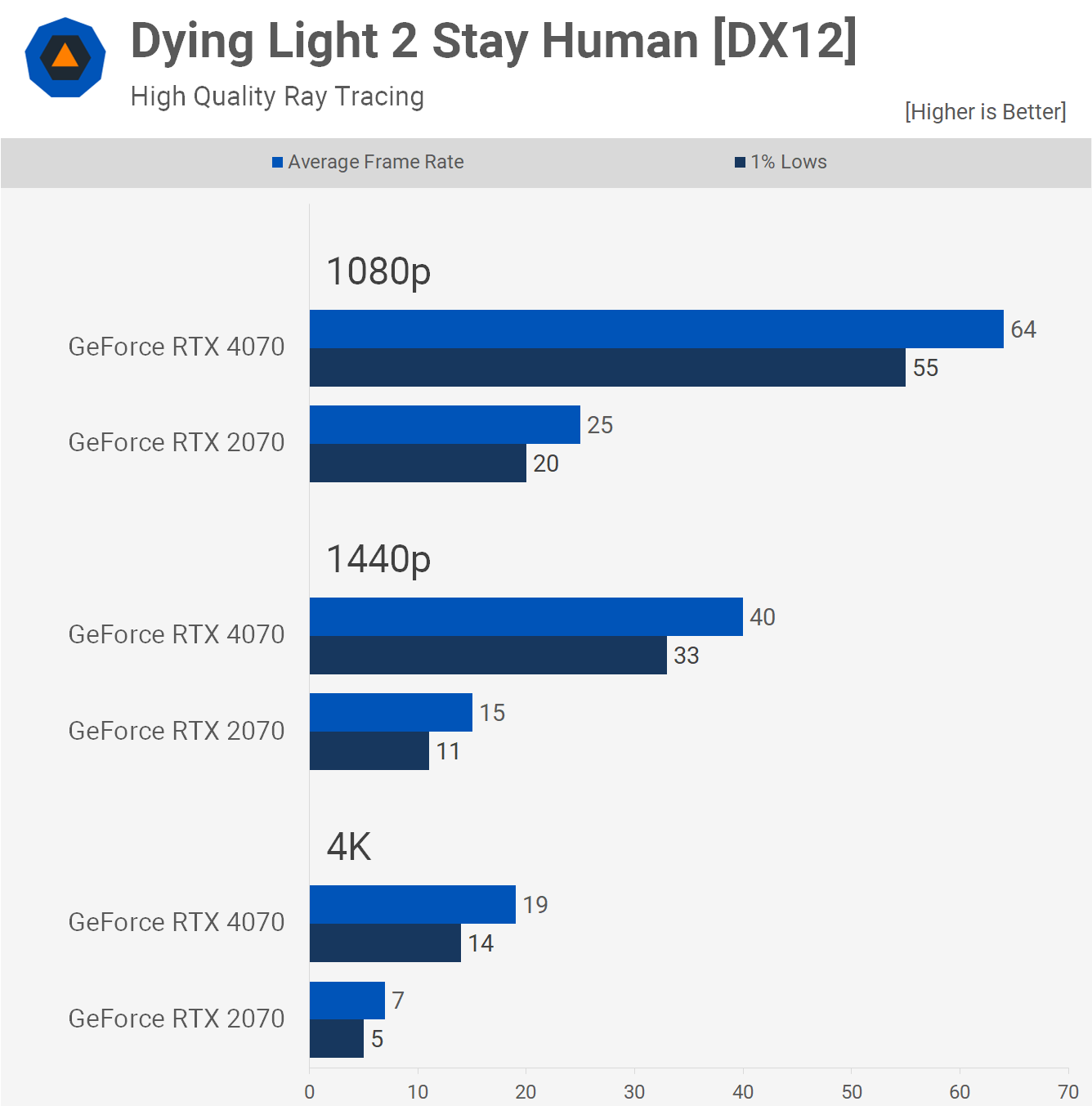
As we’ve seen multiple times now, modern ray tracing titles are where the RTX 4070 offers the most significant upgrade. Not only is performance boosted by over 150% at 1080p, but the game is also now actually usable with ray tracing enabled.
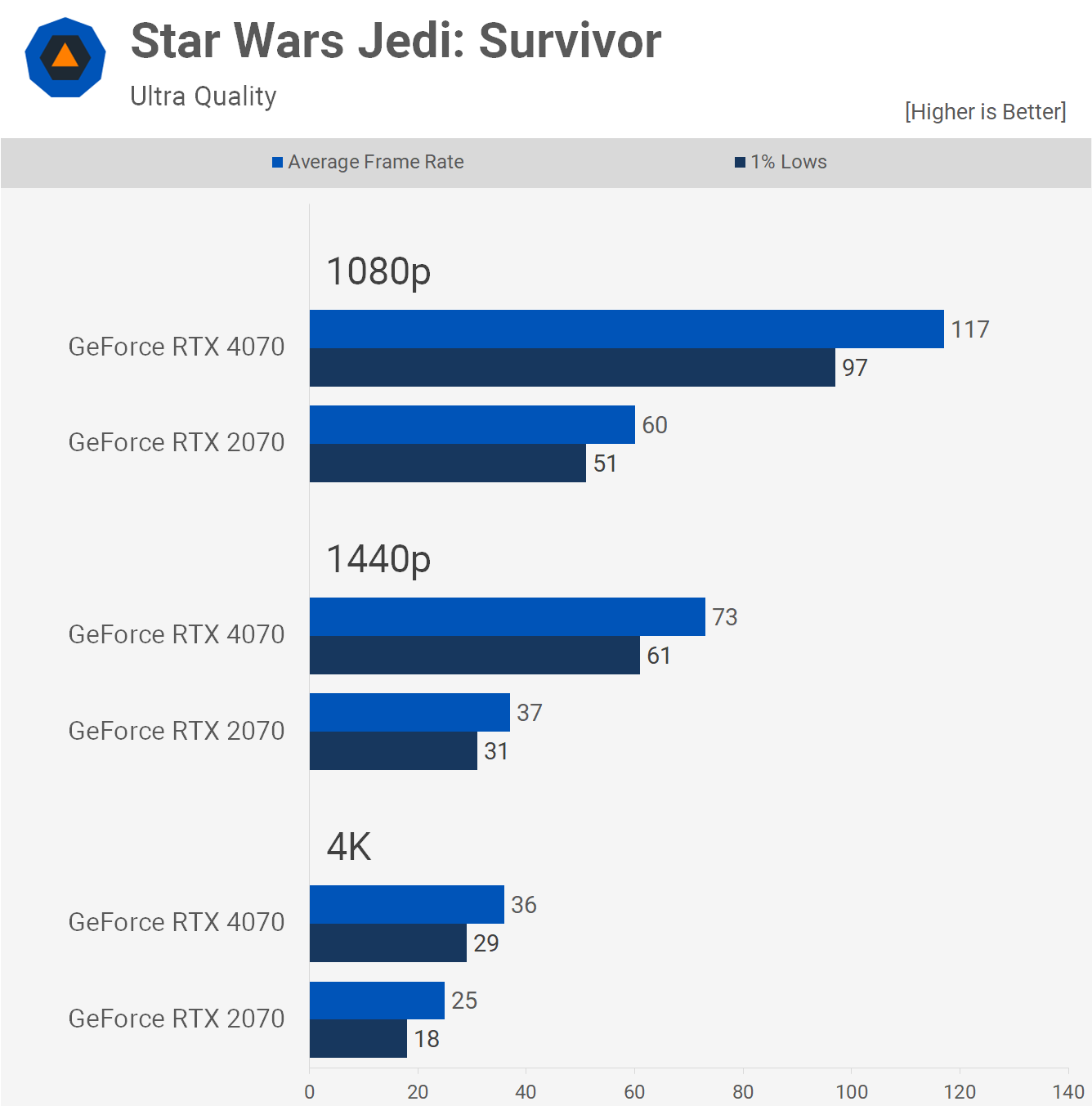
Star Wars Jedi: Survivor is playable at 1080p using the maximum visual preset with ray tracing disabled on the RTX 2070. However, it only provides a 60 fps experience at 1080p and near-unplayable performance at 1440p. Meanwhile, the RTX 4070 was 95% faster at 1080p and 97% faster at 1440p, while 4K is still out of the question without the aid of upscaling. Currently, the game officially supports only FSR, and that’s unlikely to change any time soon.
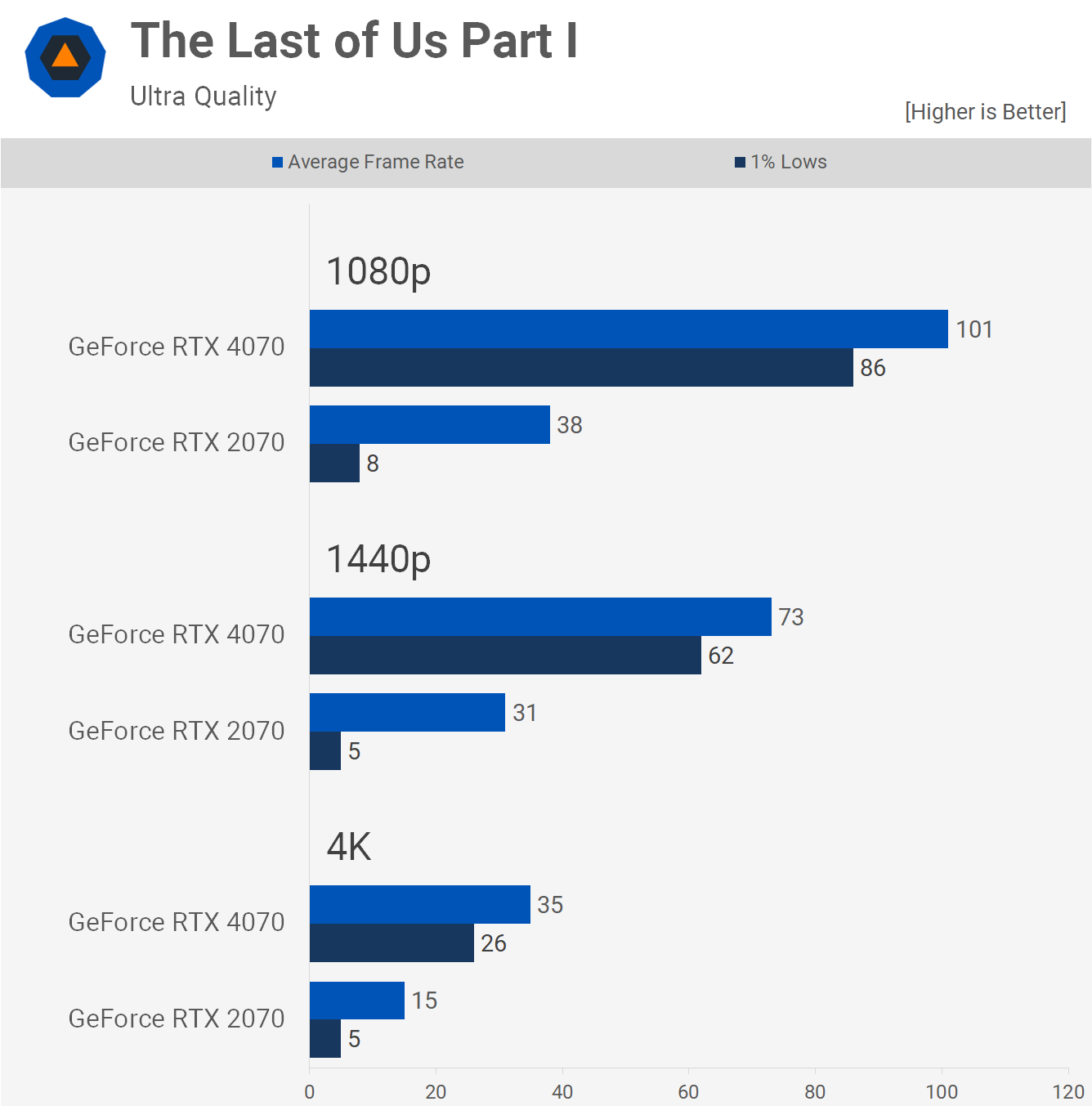
The Last of Us Part I is playable on an RTX 2070, but not with the ultra-quality settings that we use for testing. Dialing down to high will work at 1080p but not 1440p, and ideally, you’ll want to use medium. This issue has more to do with the 8GB VRAM buffer than processing power. So, under these test conditions, the RTX 2070 is inadequate, allowing the RTX 4070 to deliver 166% more performance at 1080p.
Performance Summary
We’ve just looked at almost a dozen of the 40 games tested, some with and without RT enabled. Now it’s time to see how these two GPUs compare across all the games tested, starting with the 1080p data.

Interestingly, across all games and configurations tested, the RTX 4070 was, on average, 100% faster than the 2070 at 1080p. In other words, 2070 owners can expect a massive performance upgrade at 1080p when purchasing an RTX 4070. The only exceptions, of course, will be CPU-bound games like Counter-Strike: Global Offensive, where we saw no improvement. However, outside of that, it seems the worst case will be a 50% gain, with the best case being 150% or more.
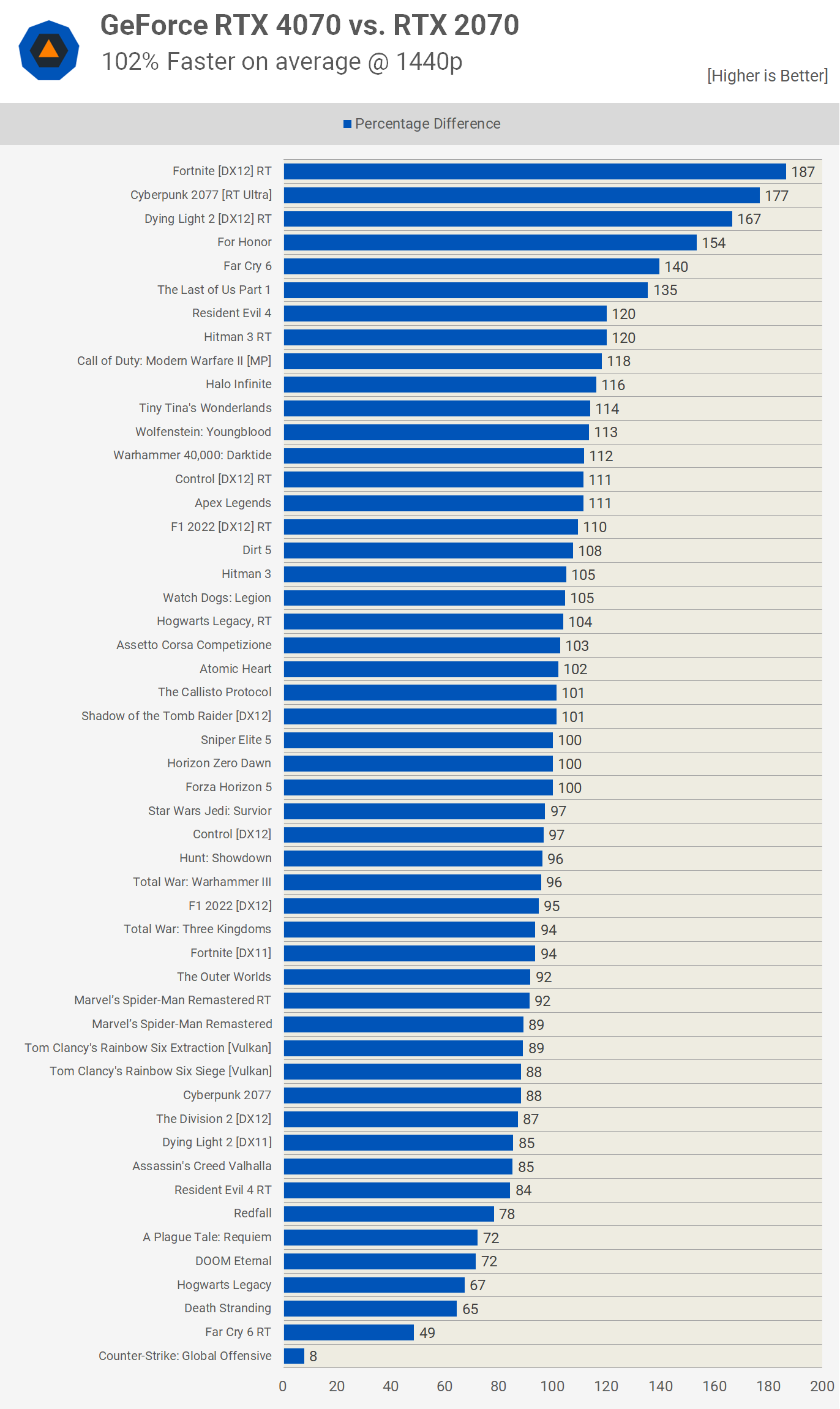
It’s much the same at 1440p. Here, the RTX 4070 was, on average, 102% faster. In reality, it was 112% faster, but we removed The Callisto Protocol ray tracing result as the 2070 was inadequate here, leading to a 610% uplift for the 4070.
In any case, the 4070 was much faster at 1440p and, in many instances, was able to deliver highly playable performance with maximum graphical fidelity, whereas the 2070 was struggling and even failing to deliver playable performance.
The 2070 struggled the most with ray tracing enabled, as seen in Fortnite, Cyberpunk 2077, and Dying Light 2.
What We Learned
So there you have it, that’s how the GeForce RTX 4070 and RTX 2070 compare across a massive sample of games, and we’ve got to say, having not looked at the RTX 2070 closely for some time now, we’d kind of forgotten how slow it is, at least by today’s standards.
As underwhelming as the RTX 4070 is, it’s no more underwhelming than any other current-generation GPU; in fact, in terms of price to performance, it’s the best thing we’ve seen priced over $500 in the last two and a half years.
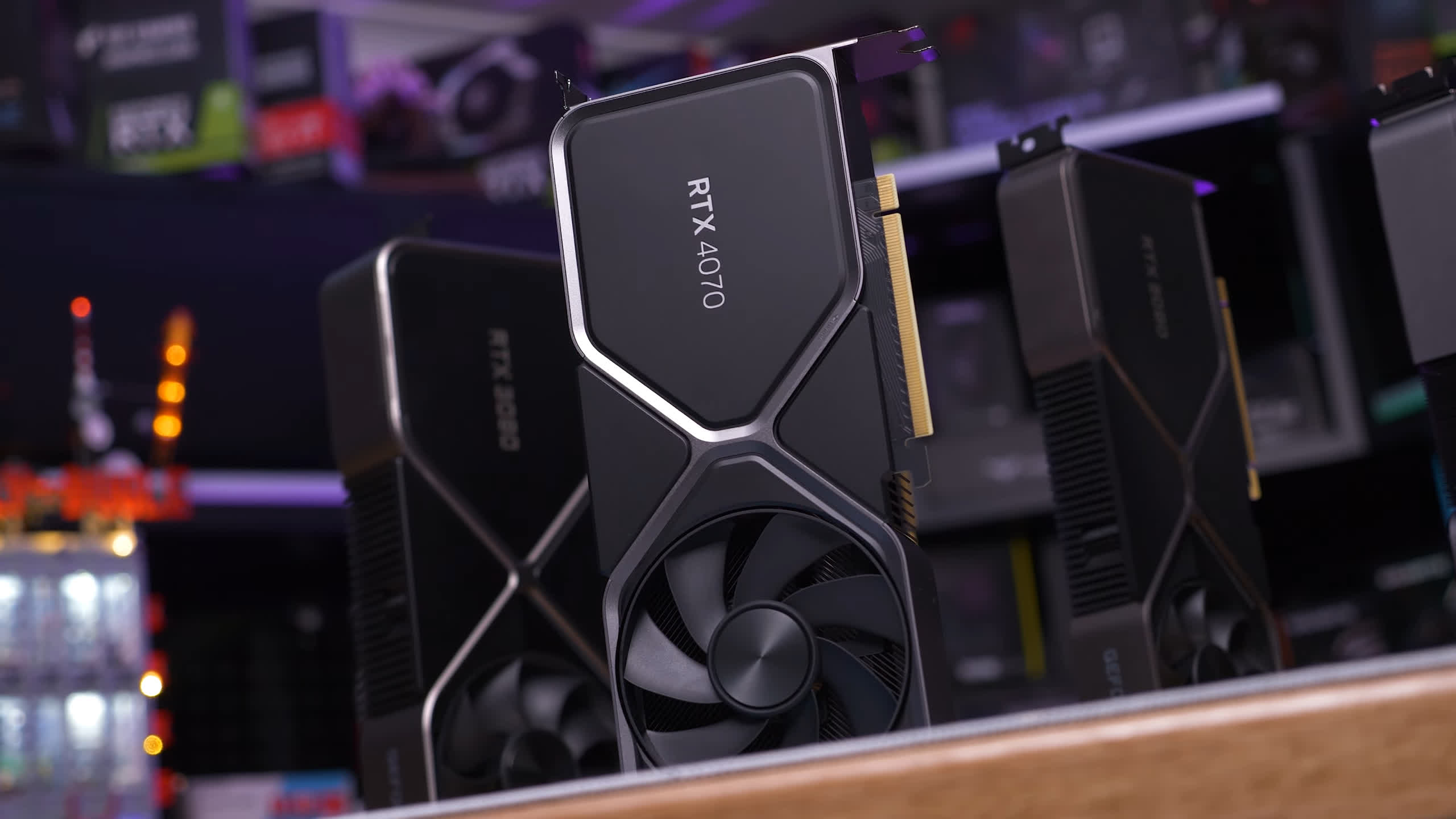
The truth is the bulk of these gains were made with the RTX 3070, which also cost $500 like the RTX 2070 that came before it. There wasn’t an upgrade in terms of VRAM capacity, with just 8GB, but it was a massive upgrade in terms of performance, offering on average around a 60% boost. So that’s pretty exciting; just 2 years after the release of the RTX 2070, the 3070 came along, offering around 60% more performance at the exact same price.
The RTX 4070, on the other hand, arrived 2.5 years after the RTX 3070, and while it has upgraded the VRAM capacity to 12GB – still a minor improvement in our opinion – it costs $100 more, and for that, you’re only getting a ~30% performance boost. So it’s around half the margin we saw from the 2070 to the 3070, with an extra $100 tacked on.
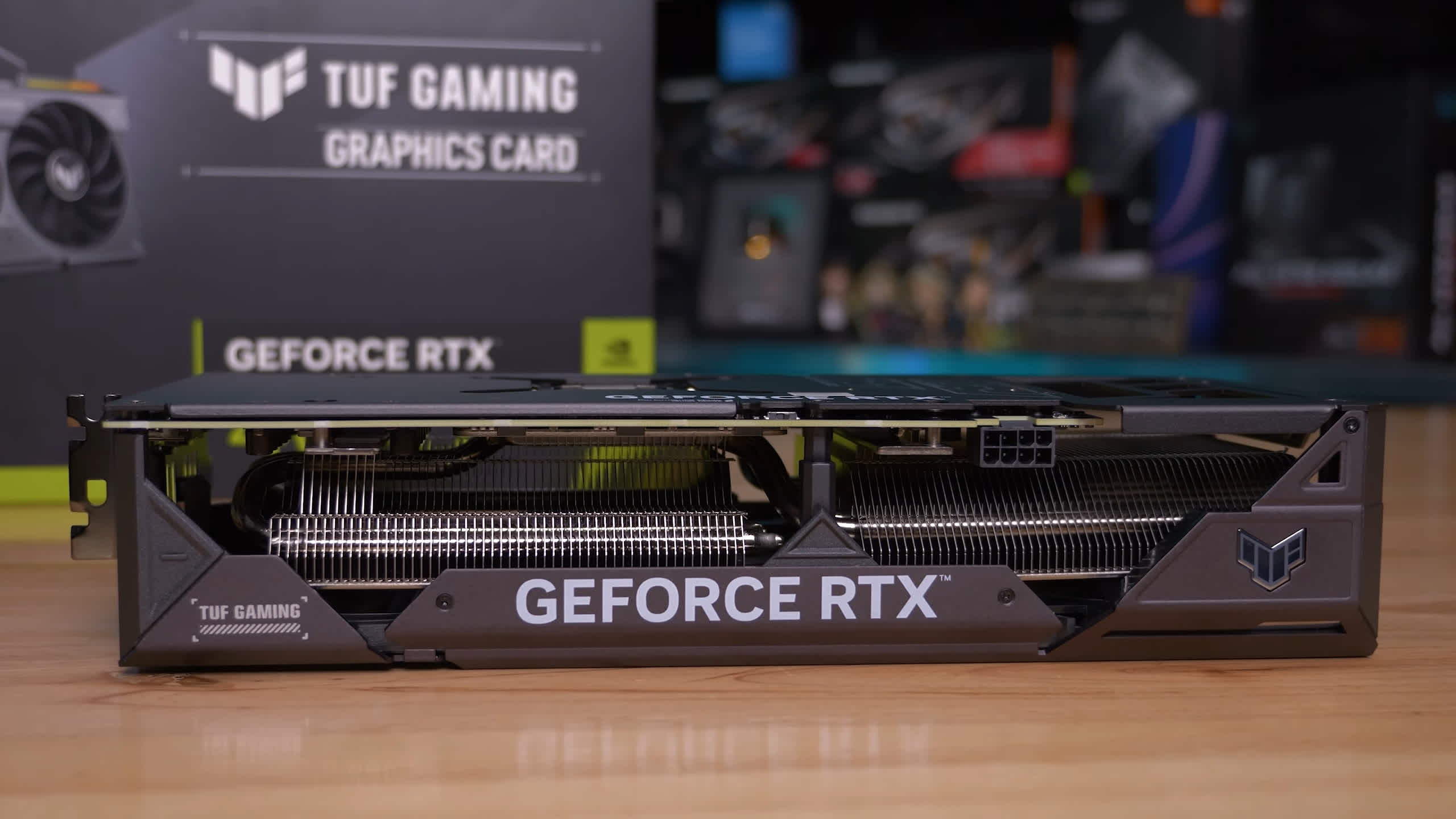
For the GeForce RTX 4070 to be as exciting as the RTX 3070 was, it would need to be the RTX 4070 Ti, and ideally, it would need to cost $500, though if we were getting ~60% more performance and a bump in VRAM capacity, $600 would be a lot easier to swallow.
As it stands, though, the GeForce RTX 4070 is as good as it gets at $600 right now, especially if you care about power efficiency and supporting technologies such as frame generation and AV1 encoding. The good news, we guess, for those who have been holding out with something like an RTX 2070, is that the new 4070 is offering around twice the performance for a $100 premium, so that’s not bad. As we’ve established, it’s also not amazing across a 5-year timeline, but still we think anyone upgrading from an RTX 2070 to a 4070 will be very happy and quite blown away by the extra performance.
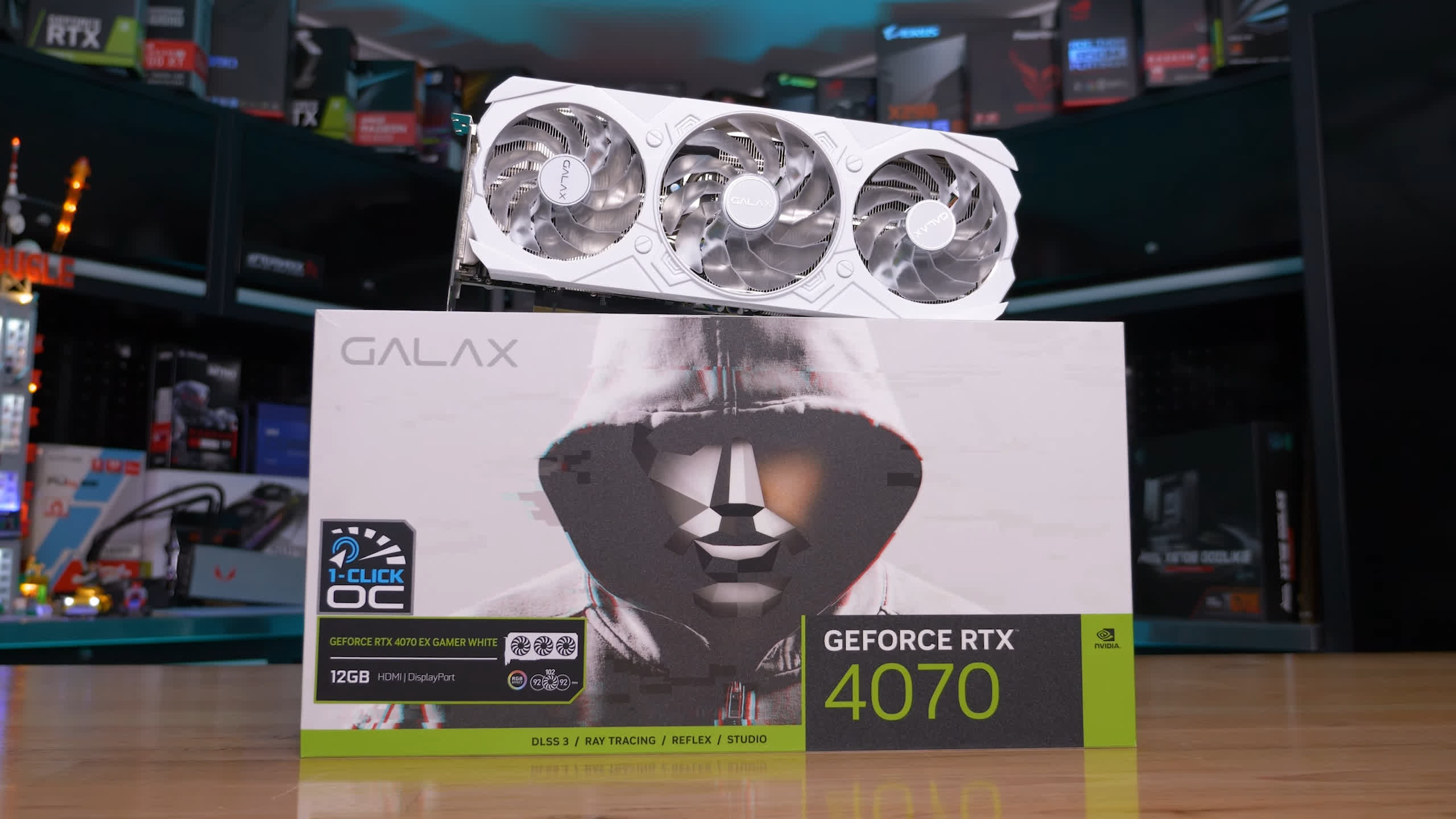
For GeForce RTX 3070 owners, the RTX 4070 is less than ideal; you’re having to pay 20% more than you did originally for just 30% more performance and a minimal VRAM upgrade. We also fear that 3070 owners will go from being shafted by 8GB of VRAM to shafted by 12GB on an even more expensive product.
Of course, that’s yet to be seen, and while some people, bless their hearts, aren’t convinced 8GB of VRAM is going the way of the dodo at the high-end, the next 12 months are likely going to be a brutal experience. As for 12GB cards, we’re not really sure what the future holds there. We think for mid-range gaming, it will be perfectly fine for the next few years, but at this point, it’s anyone’s guess. Ideally, you’ll want at least 16 GB moving forward, which is why we can’t stomach the 12GB 4070 Ti at $800.
On that note, if you have held out this long with a GeForce RTX 2070 or a similar GPU from that era, it might pay to wait a little longer and see what AMD comes out with. Though we’re not super confident we’re going to see anything terribly compelling, you never know, and like we said, if you’ve waited this long, what’s a few more months?
Shopping Shortcuts:
- Nvidia GeForce RTX 4070 on Amazon
- Nvidia GeForce RTX 4070 Ti on Amazon
- AMD Radeon RX 7900 XT on Amazon
- AMD Radeon RX 7900 XTX on Amazon
- Nvidia GeForce RTX 4080 on Amazon
- Nvidia GeForce RTX 4090 on Amazon
- AMD Ryzen 7 7800X3D on Amazon

